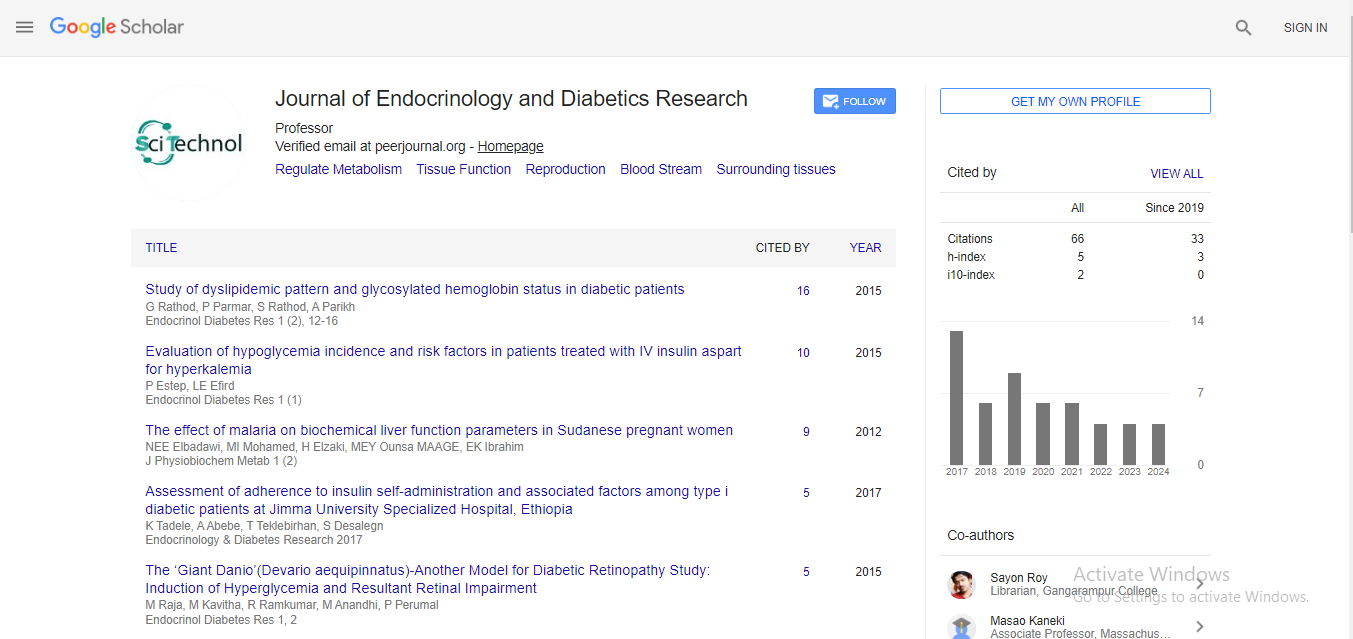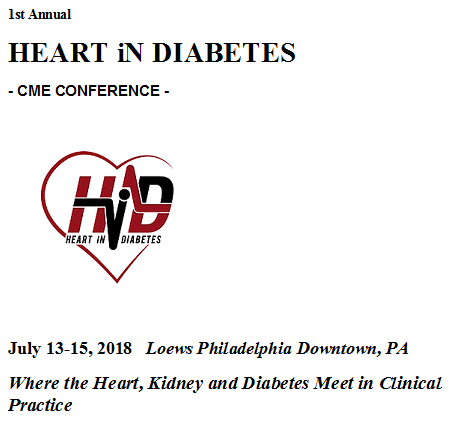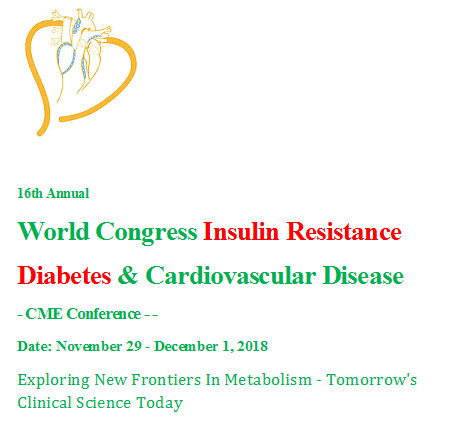Editorial, Endocrinol Diabetes Res Vol: -11 Issue: 1
Understanding Gestational Diabetes: Causes, Risks and Management
Lily Robert*
Department of Microbiology, London School of Economics and Political Science, United Kingdom
- *Corresponding Author:
- Lily Robert
Department of Microbiology, London School of Economics and Political Science, United Kingdom
E-mail: lily192@gmail.com
Received: 01-Feb-2025, Manuscript No. ecdr-25-169194; Editor assigned: 4-Feb-2025, Pre-QC No. ecdr-25-169194 (PQ); Reviewed: 19-Feb-2025, QC No. ecdr-25-169194; Revised: 26-Feb-2025, Manuscript No. ecdr-25-169194 (R); Published: 30-Feb-2025, DOI: 10.4172/2324-8777.1000426
Citation: Lily R (2025) Understanding Gestational Diabetes: Causes, Risks and Management. Endocrinol Diabetes Res 11:426
Introduction
Gestational diabetes mellitus (GDM) is a type of diabetes that develops during pregnancy, typically in the second or third trimester. It affects how the body processes glucose (sugar), leading to high blood sugar levels that can affect both the mother and the baby’s health. Unlike other types of diabetes, gestational diabetes usually disappears after childbirth, but it increases the risk of developing type 2 diabetes later in life.
This condition is relatively common, affecting about 2% to 10% of pregnancies worldwide, with rising prevalence due to increasing rates of obesity and sedentary lifestyles. Early detection and effective management are crucial to ensure a healthy pregnancy and reduce the risk of complications. Gestational diabetes mellitus (GDM) is a type of diabetes that develops during pregnancy and typically appears in the second or third trimester. It occurs when the body cannot produce enough insulin to meet the increased demands of pregnancy, leading to elevated blood glucose levels. While gestational diabetes usually resolves after childbirth, it can have significant health implications for both the mother and the baby if not properly managed [1].
Unlike type 1 or type 2 diabetes, gestational diabetes is specifically associated with pregnancy and is often diagnosed through routine screening between the 24th and 28th weeks of gestation. Many women with gestational diabetes do not experience noticeable symptoms, which makes regular testing during prenatal care essential. Risk factors include being overweight, having a family history of diabetes, being over the age of 25, or having had gestational diabetes in a previous pregnancy [2].
The condition is increasingly common, affecting 2% to 10% of pregnancies worldwide, and its prevalence continues to rise with the global increase in obesity and sedentary lifestyles. Although it can be a temporary condition, gestational diabetes requires careful monitoring and lifestyle adjustments to prevent complications. If left unmanaged, it can lead to issues such as high birth weight, premature delivery, and an increased risk of cesarean section. Additionally, both mother and child face a higher risk of developing type 2 diabetes later in life [3].
Fortunately, with early diagnosis and proper management—including a balanced diet, regular exercise, blood sugar monitoring, and sometimes medication—most women with gestational diabetes can experience a healthy pregnancy and delivery. Understanding the causes, risks, and treatment options for gestational diabetes is key to reducing its impact and promoting long-term health for both mother and child [4].
Discussion
Gestational diabetes mellitus (GDM) presents unique challenges during pregnancy, not only due to its impact on maternal and fetal health but also because of its potential long-term consequences. The condition arises when the hormonal changes of pregnancy lead to insulin resistance, and the pancreas cannot produce enough insulin to maintain normal blood glucose levels. This imbalance can result in elevated blood sugar, which may affect both the mother and the developing fetus.
One of the primary concerns with GDM is its often silent nature. Many women do not exhibit clear symptoms, making routine screening critical. Early detection allows for timely interventions, which are essential to minimizing complications such as macrosomia (a larger-than-average baby), preeclampsia, and cesarean delivery. Additionally, babies born to mothers with poorly controlled GDM are at risk for low blood sugar levels, respiratory issues, and a higher likelihood of developing obesity or type 2 diabetes later in life [5].
Management strategies for GDM emphasize lifestyle modifications. A healthy, low-glycemic diet and regular physical activity are foundational. For many women, these changes are enough to keep blood sugar levels within the recommended range. However, when lifestyle measures are insufficient, insulin therapy or oral medications may be required. Monitoring blood glucose frequently throughout the day is also vital to ensure control.
The implications of gestational diabetes extend beyond pregnancy. Women who experience GDM have a significantly increased risk of developing type 2 diabetes within 5 to 10 years postpartum. Therefore, continued monitoring, weight management, and healthy living are essential even after delivery [6].
In summary, gestational diabetes is a manageable condition with proper prenatal care. With early diagnosis, consistent monitoring, and adherence to medical guidance, women with GDM can have healthy pregnancies and reduce long-term health risks for themselves and their children [7].
Diagnosis
The most common tests used to diagnose gestational diabetes are:
Glucose Challenge Test (GCT): A screening test where the pregnant woman drinks a sugary solution, and blood sugar is tested after one hour. If levels are above a certain threshold, a second test is conducted.
Oral Glucose Tolerance Test (OGTT): A diagnostic test where the patient fasts overnight, drinks a glucose solution, and has her blood sugar tested at fasting, one hour, two hours, and sometimes three hours later [8].
A diagnosis is confirmed if one or more values are higher than normal.
Management and Treatment
The good news is that gestational diabetes can often be managed effectively with lifestyle changes, and in some cases, medication. Management involves monitoring blood sugar levels, making dietary changes, exercising regularly, and possibly using insulin or oral medications [9].
Monitoring Blood Sugar
Regularly checking blood glucose levels helps ensure they stay within target range. Women may be asked to test their blood sugar four or more times a day — usually fasting and after meals.
Physical Activity
Exercise helps lower blood sugar levels and improves insulin sensitivity. Pregnant women are generally encouraged to engage in moderate activities such as walking, swimming, or prenatal yoga, unless otherwise advised by a healthcare provider [10].
Medications
If diet and exercise aren't enough to control blood sugar, insulin injections may be prescribed. In some cases, oral diabetes medications like metformin may be used, although insulin is often preferred due to its safety profile during pregnancy.
Monitoring the Baby
Healthcare providers will closely monitor the baby’s growth and development through ultrasounds and other tests to ensure everything is progressing normally.
Conclusion
Gestational diabetes is a serious but manageable condition that requires awareness, timely diagnosis, and careful management. With proper care, most women with GDM go on to have healthy pregnancies and healthy babies. However, the long-term health of both mother and child can be influenced by how well gestational diabetes is controlled during pregnancy and managed afterward. Education, lifestyle changes, and ongoing support are key elements in preventing complications and promoting lifelong health.
References
- Hill-Taylor B, Walsh KA, Stewart S et al. Effectiveness of the STOPP/START (Screening Tool of Older Persons' potentially inappropriate Prescriptions/Screening Tool to Alert doctors to the Right Treatment) criteria: Systematic review and meta-analysis of randomized controlled studies. J Clin Pharm Ther. 41, 158-169 (2016).
- Tommelein E, Mehuys E, Petrovic M et al. Potentially inappropriate prescribing in community-dwelling older people across Europe: A systematic literature review. Eur J Clin Pharmacol. 71, 1415-1427.
- Sadozai L, Sable S, Le E Roux et al. International consensus validation of the POPI tool (Pediatrics: Omission of Prescriptions and Inappropriate prescriptions) to identify inappropriate prescribing in pediatrics. PLoS ONE .15, 47-72 (2018).
- Barry E, Moriarty F, Boland F et al. The PIPc Study-application of indicators of potentially inappropriate prescribing in children (PIPc) to a national prescribing database in Ireland: A cross-sectional prevalence study. BMJ Open. 8, 69-556 (2019).
- Al-Badri A. Almuqbali J, Al-Rahbi K et al. A Study of the Paediatric Prescriptions at the Tertiary Care Hospital in Oman. J Pharmaceut Res. 5, 17-56 (2020)
- Al-Maqbali, Haridass S, Hassali M et al. Analysis of Pediatric Outpatient Prescriptions in a Polyclinic of Oman. Glob J Med Res. 19, 2249-4618 (2019).
- Cullinan S, O'Mahony D, Fleming A et al. A meta-synthesis of potentially inappropriate prescribing in older patients. Drugs Aging.31, 631-638(2014).
- Liew TM, Lee CS, Goh Shawn KL et al. Potentially Inappropriate Prescribing Among Older Persons: A Meta-Analysis of Observational Studies. Ann Fam Med. 17, 257-266(2019).
- Crowe B, Hailey D. Cardiac picture archiving and communication systems and telecardiology - technologies awaiting adoption. J Telemed Telecare.8, 3-11(2002).
- Bouchier IA. Postmortem study of the frequency of gallstones in patients with cirrhosis of the liver. Gut. 10, 705-710.
Indexed at, Google scholar, Crossref
Indexed at, Google scholar, Crossref
Indexed at, Google scholar, Crossref
 Spanish
Spanish  Chinese
Chinese  Russian
Russian  German
German  French
French  Japanese
Japanese  Portuguese
Portuguese  Hindi
Hindi 


